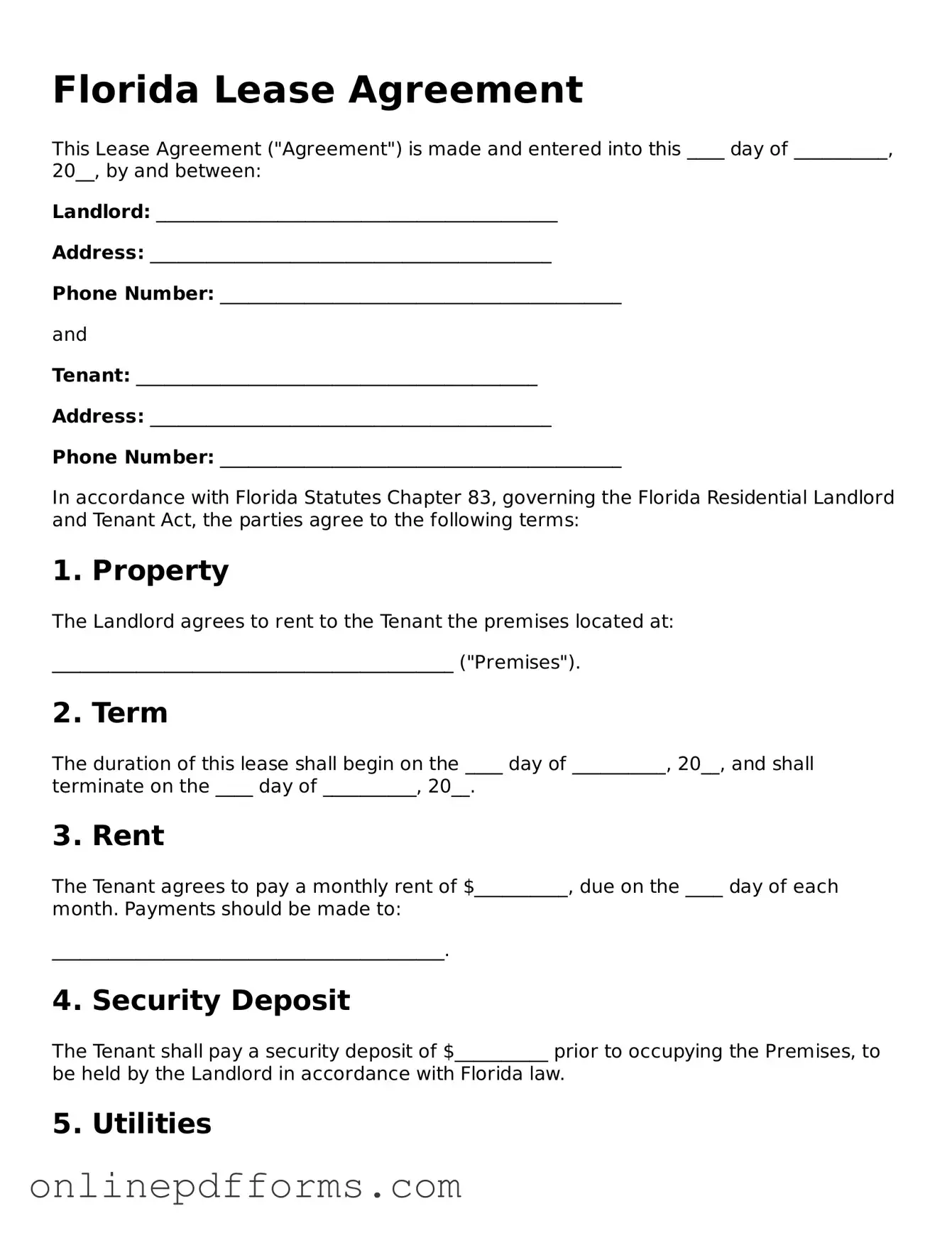The Florida Rental Application is similar to the Florida Lease Agreement as it serves as a preliminary step in the rental process. It allows landlords to gather essential information about potential tenants. This document typically requests personal details, rental history, and financial background. By reviewing this information, landlords can determine if a prospective tenant is a good fit for their property before entering into a lease agreement.
The Florida Month-to-Month Lease Agreement provides flexibility for both landlords and tenants. Unlike a standard lease, which usually lasts for a fixed term, this agreement allows tenants to rent a property on a monthly basis. Both parties can terminate the agreement with proper notice, making it a suitable option for those who may not want to commit long-term. It shares similarities with the Florida Lease Agreement in that it outlines terms, conditions, and responsibilities of both parties.
The Florida Sublease Agreement is another document that is closely related to the Florida Lease Agreement. This agreement allows a tenant to rent out their leased property to another person, known as the subtenant. The original tenant remains responsible to the landlord for the lease terms. Like the lease agreement, the sublease outlines the rights and obligations of both the original tenant and the subtenant, ensuring clarity in the arrangement.
The Florida Commercial Lease Agreement is similar in structure to the residential lease agreement but is tailored for business properties. It outlines the terms under which a business can occupy a commercial space. Key elements include rent, duration, and maintenance responsibilities. Both agreements aim to protect the interests of landlords and tenants while ensuring compliance with local laws.
The Florida Lease Renewal Agreement is another related document that extends the terms of an existing lease. When a tenant and landlord agree to continue their rental relationship, they can use this document to outline the new terms, such as updated rent or lease duration. This agreement helps avoid misunderstandings and maintains a clear record of the ongoing rental arrangement.
The Florida Lease Termination Notice is a critical document that allows either party to formally end a lease agreement. It specifies the intent to terminate the lease and provides necessary details, such as the termination date. Similar to the lease agreement, it requires adherence to state laws regarding notice periods and other conditions, ensuring both parties are aware of their rights and obligations.
The Florida Property Management Agreement is relevant for landlords who hire property managers to oversee their rental properties. This document outlines the responsibilities of the property manager, including tenant screening, rent collection, and property maintenance. While it differs from the lease agreement, it complements it by establishing a framework for managing the landlord-tenant relationship.
The Florida Eviction Notice is another important document that relates to the lease agreement. If a tenant fails to comply with the terms of the lease, the landlord may issue this notice to inform the tenant of the breach and the need to vacate the property. This document serves as a formal step in the eviction process, ensuring that both parties understand the situation and the necessary actions moving forward.
The Florida Rent Receipt is a document that confirms payment of rent by the tenant. It serves as proof of payment and includes details such as the amount paid, the date, and the property address. While it is not a lease agreement, it is a critical record that supports the terms outlined in the lease, helping both landlords and tenants keep accurate financial records.
